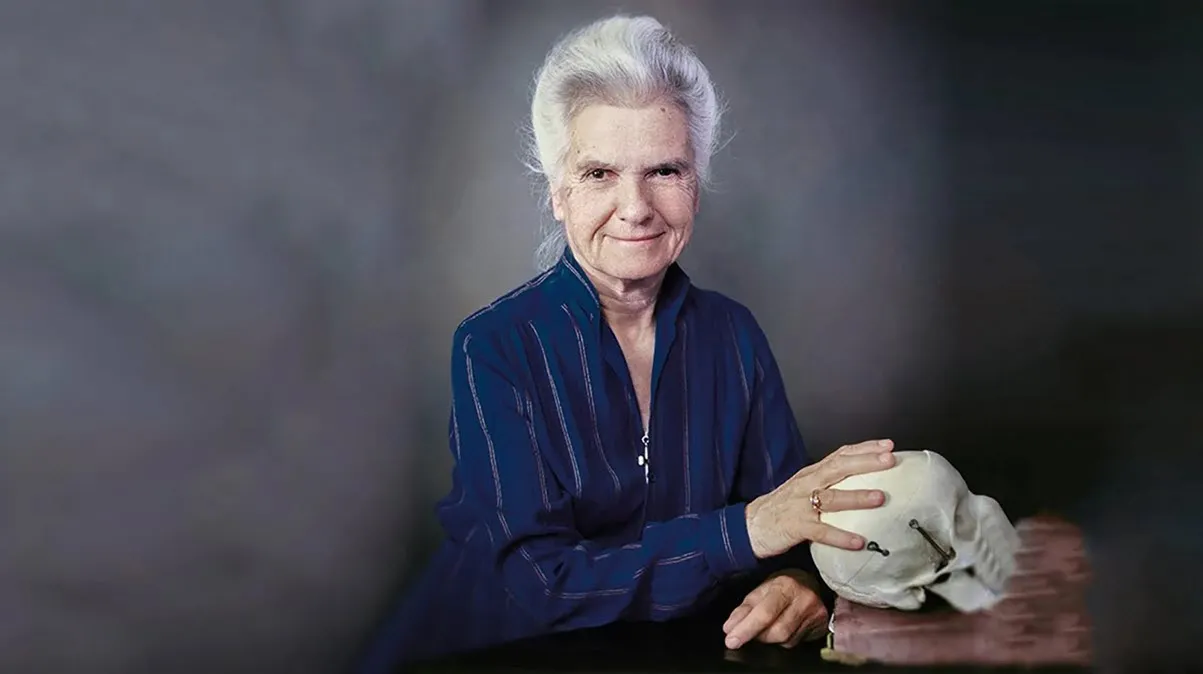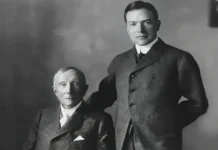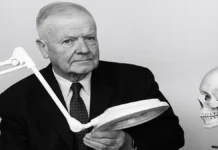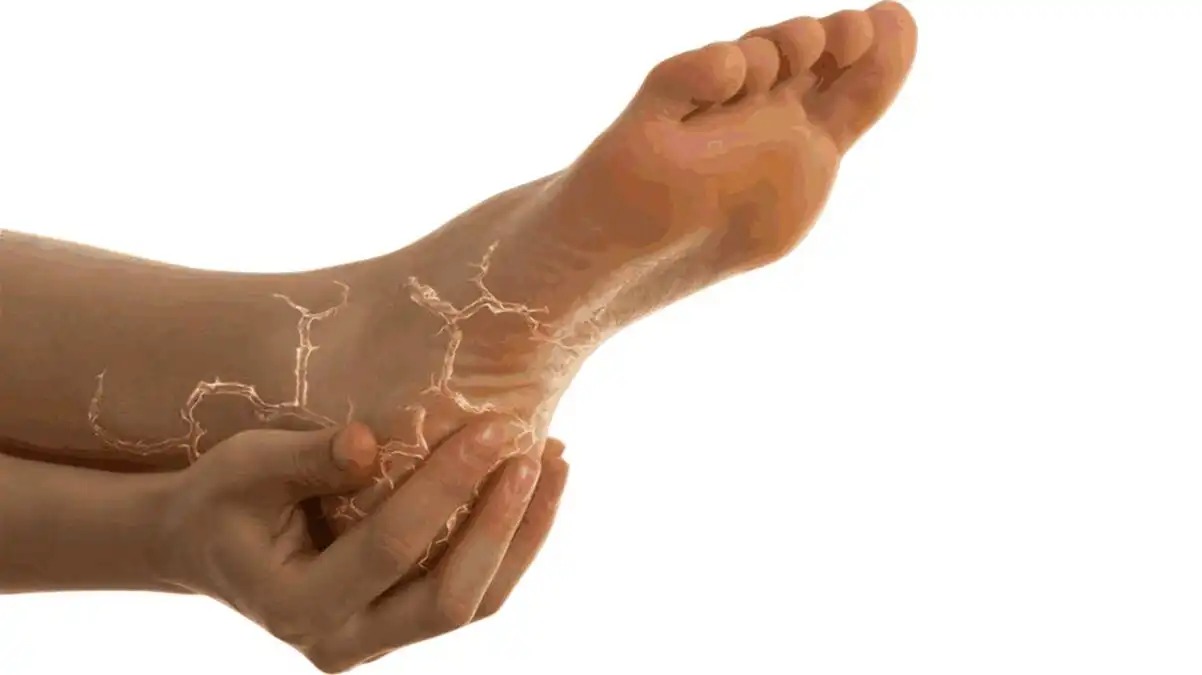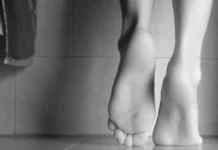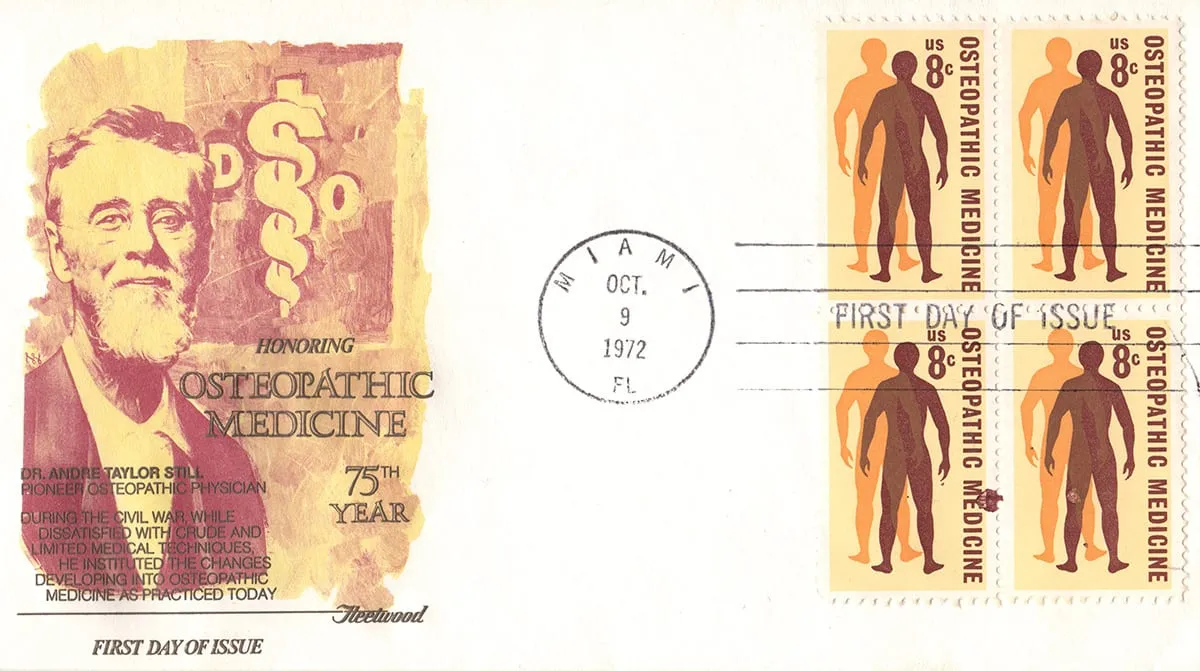Viola Frymann: A Life dedicated to Osteopathy
Viola Frymann, born in 1921 and died in 2016, remains an emblematic figure in the field of osteopathy. His significant impact in the development of pediatric osteopathy and osteopathic research has left a lasting legacy. In this article, we will explore the exceptional life and contributions of Viola Frymann, highlighting her crucial role in the advancement of osteopathic practice, particularly in the pediatric context.
Viola Frymann has dedicated her life to the in-depth understanding of the human body and the application of her knowledge in the field of osteopathy. Born in Philadelphia in 1921, she graduated from the University of Pennsylvania in 1942, before continuing her medical studies at the University of Philadelphia. His interest in osteopathy was sparked by a personal experience that transformed his view of conventional medicine.

After receiving her medical degree in 1945, Viola Frymann underwent extensive training in osteopathy, immersing herself in the fundamentals of the discipline. His commitment to pediatric osteopathy was particularly remarkable. She quickly gained a reputation as an expert in the treatment of infants and children, attracting the attention of her peers and thus raising the profile of pediatric osteopathy.
One of Frymann’s most notable contributions was his role in founding the Children’s Osteopathic Center in San Diego in 1953. This center became a pioneer in pediatric osteopathic treatment and contributed significantly to the research in this area. Frymann’s passion for improving children’s health was reflected in his efforts to educate medical professionals and raise public awareness of the benefits of osteopathy in young patients.
In addition to her clinical involvement, Viola Frymann has also played a crucial role in osteopathic research. She has published numerous articles and works which have enriched the scientific literature on pediatric osteopathy. His work laid the foundations for new therapeutic approaches and sparked growing interest in the integration of osteopathy into conventional pediatric care.
Viola Frymann’s legacy lives on through the practitioners she trained and influenced. Its impact on the development of pediatric osteopathy is manifested in the increased recognition of this discipline and its progressive integration into holistic health care. In the following sections of this article, we will take a closer look at Frymann’s primary areas of expertise, her influence on the medical community, and the significant advancements she has made to pediatric osteopathic practice.
Viola Frymann has published numerous articles in pediatric osteopathy
Viola Frymann, whose indelible mark on the field of pediatric osteopathy is widely recognized, has left an exceptional legacy through her remarkable scientific contributions. His commitment to osteopathic research, particularly in the pediatric context, resulted in the publication of numerous articles that profoundly influenced the discipline.
One of the hallmarks of Viola Frymann’s career is her ability to merge clinical experience with scientific rigor. His articles, often published in renowned medical journals, have expanded the knowledge base of pediatric osteopathy and laid the foundation for new therapeutic approaches. Frymann devoted a significant portion of his writing to understanding the underlying mechanisms of common pediatric conditions and exploring the specific applications of osteopathy in these cases.
His pioneering work has often addressed themes such as the influence of craniosacral dysfunction in infants and children, the implications of childbirth on skull mobility, and the effect of osteopathy on the neurological development of young patients. . These articles have not only expanded the understanding of osteopathic practitioners, but have also served as essential references for health professionals more broadly interested in the impact of unconventional approaches in the pediatric field.
One of Frymann’s most famous articles, for example, looked closely at the benefits of osteopathy in infants with sleep disorders. She identified significant links between craniosacral mobility restrictions and sleep problems, highlighting the crucial role of osteopathy in managing these problems in young children.
Viola Frymann’s influence is not only limited to her academic writings, but also extends to her ability to translate complex concepts into accessible terms. She has played a vital role in the continuing education of healthcare professionals by sharing her knowledge at conferences and trainings. His articles have often served as a starting point for lively discussions within the medical community, stimulating increased interest in the integration of pediatric osteopathy into conventional medical practices.
In conclusion, Viola Frymann’s numerous articles published in the field of pediatric osteopathy demonstrate her dedication to the advancement of the discipline. These writings, combining clinical expertise and scientific research, have left an indelible mark on the understanding and practice of pediatric osteopathy, and continue to positively influence the way health professionals approach the care of children.
Contributions to Pediatric Osteopathy
Viola Frymann’s legacy in the field of pediatric osteopathy is undeniably marked by her fervent advocacy and exceptional commitment to children’s health. One of her most notable contributions is her ability to raise awareness within the profession of the benefits of osteopathy for young patients, a mission to which she has been dedicated throughout her career.
Viola Frymann has played a central role in promoting pediatric osteopathy by contributing to the training of future practitioners. She has shared her knowledge and expertise at conferences, seminars and workshops, sparking growing interest in this specialty within the medical community. His advocacy helped break down initial barriers and broaden recognition of osteopathy as an effective and safe therapeutic modality for children.
In addition to his role as an advocate, Frymann has developed specific treatment protocols, offering innovative osteopathic solutions to treat common pediatric conditions. These conditions include sleep problems, eating disorders, and recurrent ear infections. By developing holistic approaches adapted to the needs of children, she has demonstrated that osteopathy can play a crucial role in the management and prevention of various pediatric disorders.
Frymann’s holistic approach has had a profound impact on the way osteopaths approach pediatric care. She highlighted the importance of considering the overall health of the child, highlighting the idea that the balance of the musculoskeletal system plays a central role in their overall well-being. This broader perspective has positively influenced osteopathic practice by encouraging an integrated approach that considers not only specific symptoms, but also global aspects of childhood health.
His advocacy and commitment helped establish pediatric osteopathy as a respected and recognized discipline, paving the way for a better understanding of its therapeutic potential in children. Thus, Viola Frymann left a lasting imprint by shaping the perception of pediatric osteopathy and inspiring future generations of practitioners to place the well-being of children at the heart of their practice.
Innovative therapeutic approaches
Viola Frymann was a pioneering figure in the field of pediatric osteopathy, recognized for her innovative therapeutic methods and techniques which revolutionized the care of children. His unique approach was characterized by a deep understanding of infant physiology and a remarkable sensitivity to the specific needs of toddlers. Among the specific therapeutic methods and techniques that she has developed, several stand out for their originality and effectiveness:
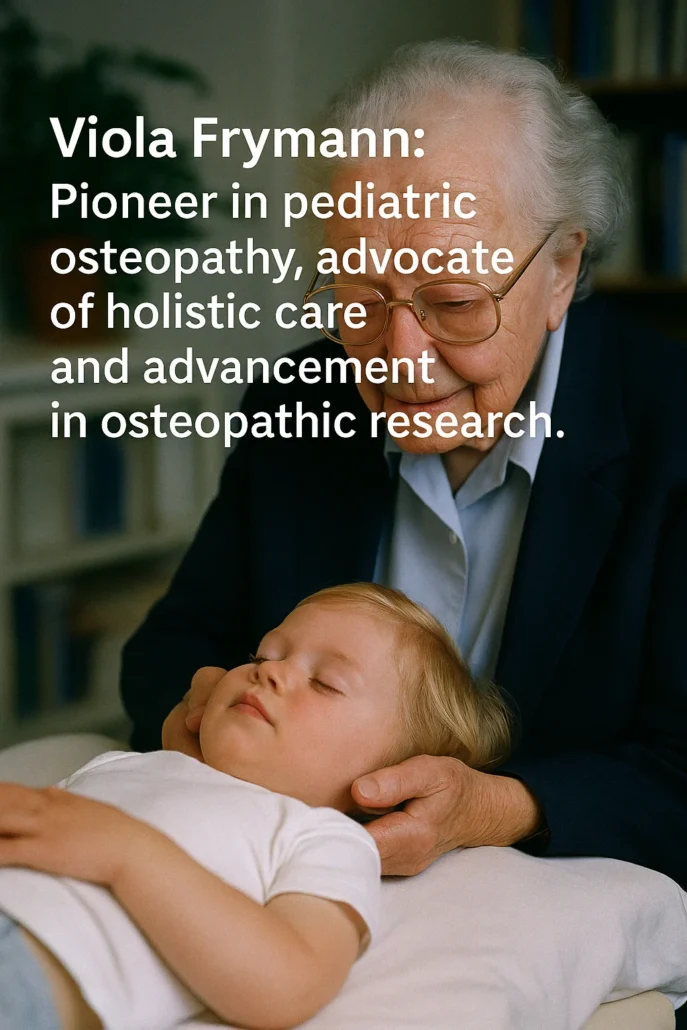
- Careful Assessment : Frymann placed great importance on a thorough assessment of each child, taking into account not only the presenting symptoms, but also medical history, physical development and movement patterns.
- Subtle palpation : His exceptional ability to detect tensions and subtle imbalances in children’s bodies through palpation allowed him to identify osteopathic dysfunctions and treat them with precision.
- Gentle Techniques : Frymann was known for her gentle, non-invasive techniques, adapted to children’s delicate structures. She used subtle touches and gentle movements to correct dysfunctions, promote circulation and stimulate the body’s ability to self-heal.
- Cranial Treatment : His deep understanding of the anatomy and physiology of the skull has allowed him to develop specific cranial treatment techniques to correct tensions and restrictions that can affect the central nervous system.
- Holistic approach : Frymann considered each child as a whole, taking into account not only the physical, but also the emotional and environmental aspects of their well-being. His holistic approach aimed to restore balance and health at all levels.
- Interdisciplinary Collaboration : As an advocate for interdisciplinary collaboration, Frymann worked closely with other healthcare professionals, such as pediatricians, speech pathologists and psychologists, to provide comprehensive, coordinated care for children.
- Holistic Assessment : Frymann took a holistic approach in assessing children, taking into account their medical history, physical development, behavior and home environment to fully understand their health needs.
- Specific Cranial Techniques : She developed specific cranial manipulation techniques that aimed to correct tensions and dysfunctions in the bones of the skull, thereby promoting optimal balance in the central nervous system.
- Neurodevelopmental Approach : Frymann was attentive to children’s neurological development and used techniques aimed at supporting and stimulating their growing nervous systems, thereby promoting optimal neurological functions.
- Movement Integration : She often incorporated gentle movement and exercise techniques into her treatments, encouraging children to actively participate in their own recovery and strengthen their proprioception and coordination.
- Attention to Breathing : Frymann placed great emphasis on breathing in children and used techniques to release chest and abdominal restrictions, promoting deeper, more efficient breathing.
- Parent education : She actively involved parents in the treatment process, educating them on techniques they could use at home to support their child’s well-being and extend the benefits of osteopathy sessions.
The originality and effectiveness of the therapeutic methods developed by Viola Frymann lie in their ability to treat children in a gentle, respectful and holistic manner, promoting their optimal development and general well-being. His legacy lives on in the practice of many pediatric osteopaths who continue to apply his principles and techniques to help children thrive and flourish.
Influence of Viola Frymann on osteopathic education
Viola Frymann left a significant imprint on osteopathic education, both clinically and theoretically, putting forward innovative principles and practices that continue to influence the training of future osteopaths. Here’s how she helped shape osteopathic education programs and how her work continues to make an impact today:
- Integration of pediatric osteopathy into study programs : Viola Frymann was a pioneer in recognizing the importance of pediatric osteopathy. His clinical work and research have highlighted the effectiveness of osteopathy in children, leading to greater integration of this discipline into osteopathic curricula. Today, many osteopathic programs include courses dedicated to pediatric osteopathy, allowing future osteopaths to acquire the knowledge and skills necessary to treat children effectively and safely.
- Holistic approach to health : Frymann emphasized the importance of a holistic approach to health, which takes into account not only the physical, but also the emotional, psychological and environmental aspects of patients’ well-being. This approach has influenced the way osteopathy is taught, highlighting the need for future osteopaths to view their patients as a whole and work collaboratively with other healthcare professionals to provide comprehensive and coordinated care.
- Development of practical skills : Frymann was known for her exceptional clinical expertise and practical skills. His work inspired a greater emphasis on the development of practical skills in osteopathic students, emphasizing palpation, manipulation and other specific therapeutic techniques. Osteopathic degree programs often incorporate clinical internships and hands-on learning opportunities to allow students to develop their skills under the supervision of experienced practitioners.
- Research and Innovation : As a prolific researcher, Frymann has contributed to the advancement of osteopathic knowledge through her clinical research and publications. His work continues to inspire osteopathic students and educators to engage in research and innovation, furthering the continued development of the profession.
- Patient-centered approach : Frymann has always emphasized the importance of placing the patient at the center of care. His empathetic and caring approach to his patients has inspired a greater emphasis on soft skills and communication in osteopathic training programs. Students are encouraged to develop a trusting relationship with their patients and actively involve them in their healing process.
- Integration of Scientific Evidence : In addition to his clinical work, Frymann has also been a strong advocate for the integration of scientific evidence into osteopathic practice. His commitment to research and his insistence that osteopathic interventions be evidence-based have influenced the teaching of the fundamentals of research and critical evaluation of evidence in osteopathic curricula.
- Continuing Education : Frymann strongly believed in the importance of continuing education for osteopathic practitioners. His own commitment to staying at the forefront of developments in the field has inspired a culture of lifelong learning among osteopathic students. Degree programs often incorporate continuing education opportunities and encourage students to continue their education throughout their careers.
- Leadership and Mentoring : As a leader in his profession, Frymann has played a crucial role as a mentor to many osteopathic students and young practitioners. His example has inspired a new generation of osteopaths to pursue clinical excellence and take on leadership roles within the profession.
Her writings on child health
Viola Frymann has produced a significant body of writing on children’s health, highlighting her expertise in pediatric osteopathy and her commitment to the well-being of children. Here are some of his most notable articles and works, and their impact on the understanding of pediatric conditions and clinical practice:
- “Relation of Disturbances of Craniosacral Mechanism to Symptomatology of the Newborn: Study of 1,250 Infants” : This article, published in the Journal of the American Osteopathic Association in 1966, is one of Frymann’s first major clinical studies of dysfunction of the system craniosacral in newborns. She examined 1,250 infants and identified correlations between craniosacral dysfunction and various symptoms, highlighting the importance of osteopathy in the early care of infants.
- “The Relevance of Osteopathic Muscle Energy Procedures to Pediatrics” : In this article, Frymann explores the application of muscle energy techniques in pediatric osteopathy. Published in the Journal of the American Osteopathic Association in 1979, this article helped expand the scope of osteopathic interventions in children, highlighting their effectiveness in treating musculoskeletal disorders in young patients.
- “Manual Therapy in Children: Proposals for an Etiologic Approach” : This chapter, published in the book “Pediatric Manual Medicine: An Osteopathic Approach” in 2009, offers an in-depth analysis of the etiologic approach to pediatric disorders in osteopathy. Frymann explores the underlying causes of childhood conditions and offers specific treatment strategies to address these problems at the source.
- “The Osteopathic Treatment of Children” : This book, published in 1996, is a comprehensive resource on pediatric osteopathy. It covers a range of topics, including pediatric anatomy and physiology, specific treatment techniques, and clinical considerations for treating children of all ages. This book has become an essential reference work for osteopathic practitioners who work with children.
- “Osteopathy in the Cranial Field” : Although this work is not specifically focused on children’s health, it has greatly influenced the practice of craniosacral osteopathy, a therapeutic approach often used in children. The concepts and techniques presented in this book have been integrated into many clinical practices in pediatric osteopathy.
These writings by Viola Frymann have had a significant impact on the understanding of pediatric conditions and on clinical practice in osteopathy. They helped establish osteopathy as an effective and safe therapeutic modality for the treatment of children, highlighting the importance of a holistic and etiological approach in the management of childhood disorders.
Viola Frymann anecdote
Although Viola Frymann has been primarily recognized for her exceptional contributions to the field of pediatric osteopathy, one fascinating anecdote from her career illustrates her dedication to her patients and her clinical ingenuity.
During one period in her career, Viola Frymann was faced with a complex case involving an infant who was suffering from severe and persistent sleep problems. Traditional methods did not seem to provide lasting solutions, which sparked Frymann’s curiosity and creativity.
After extensive observations, Frymann identified a possible relationship between the infant’s craniosacral mobility restrictions and his sleep problems. With exceptional clinical insight, she developed an innovative treatment protocol, personalized to meet the specific needs of this young patient. Treatment targeted imbalances in the infant’s musculoskeletal system, with particular attention to the cranial region.
As the treatment sessions progressed, significant improvements were observed in the infant’s sleep. This clinical success not only solved the patient’s specific problem, but also opened new perspectives in the treatment of sleep disorders in infants through osteopathy.
This anecdote highlights Viola Frymann’s clinical genius and commitment to innovation in the field of pediatric osteopathy. His ability to identify subtle connections between craniosacral mobility and a patient’s specific symptoms is a testament to his holistic approach and willingness to explore new therapeutic avenues to improve children’s health.
The anecdote also illustrates how Viola Frymann integrated practical research into her career, contributing to the expansion of knowledge in the field of pediatric osteopathy. His determination to solve complex challenges not only benefited his patients, but also enriched the discipline as a whole. Viola Frymann thus remains a source of inspiration for practitioners who seek to combine clinical expertise, creativity and commitment to patient well-being.
Viola Frymann end of life
The end of Viola Frymann’s life in 2016 marks the conclusion of an extraordinary career dedicated to pediatric osteopathy and the advancement of children’s health care. On the eve of her death, Frymann left behind an exceptional legacy of discoveries, influential publications and the training of numerous practitioners.
By the end of her life, Viola Frymann had solidified her reputation as a pioneer and leading figure in the field of pediatric osteopathy. His exceptional contributions had left an indelible mark on the discipline, helping to change the way health professionals view osteopathy in the context of child care.
The period preceding his death was marked by the transmission of his knowledge and experience to the next generation of pediatric osteopaths. Viola Frymann has invested time and energy in training practitioners, sharing her extensive knowledge at conferences, seminars and training programs. Her vision was to ensure that her legacy lived on through those she had influenced, ensuring that her impact in the field continued.
Frymann’s academic legacy also continued to flourish after his death. His writings, articles and books, have continued to be essential references for osteopathic students and experienced practitioners. The innovative research she had conducted, as well as the innovative treatment protocols she had developed, continued to guide pediatric osteopathic practice and inspire new avenues of research.
The osteopathic and medical community has mourned the loss of this eminent figure, but her legacy lives on through the medical professionals she trained, the children she helped, and the knowledge she left behind. The life and career of Viola Frymann is thus commemorated not only by those who knew her personally, but also by all those whose practice and understanding of pediatric osteopathy were profoundly influenced by her invaluable work. His physical departure only strengthened his lasting impact on the world of osteopathy and left a void that only his continuing legacy can fill.
Tribute to her legacy after his death
Following the death of Viola Frymann, the osteopathic and medical community joined forces to pay tribute to her exceptional life and work. Commemorative articles have been published in medical and osteopathic journals around the world, highlighting his profound impact on the profession and children’s health. Laudatory obituaries have also been written, highlighting his dedication to the welfare of children and his lasting influence on osteopathic clinical practice.
To perpetuate his legacy, several initiatives have been put in place. Conferences and symposia were held, providing the osteopathic community with an opportunity to come together and share inspiring memories of Viola Frymann, while highlighting current advances in child health and pediatric osteopathy. Additionally, scholarships and awards have been established in his name, supporting training and research in pediatric osteopathy.
The publication of compilations of his writings also made his work accessible to a wider audience. These works bring together her most significant articles, studies and books, allowing osteopathic students, practitioners and researchers to discover and appreciate Viola Frymann’s exceptional contribution to child health and osteopathy.
Tributes have been paid to Viola Frymann at medical and osteopathic institutions around the world. Memorial plaques have been unveiled, annual conferences in his honor have been held, and continuing education programs have been dedicated to his work and teachings. These initiatives aim to continue his legacy and inspire healthcare professionals to follow his values of compassion, clinical expertise and commitment to the well-being of children.
Together, these efforts demonstrate the immense respect and admiration that the osteopathic and medical community has for Viola Frymann. His legacy will endure through generations, continuing to inspire and guide osteopathic practitioners in their quest to provide quality, compassionate care to children around the world.
- Memorial Articles and Obituaries : Numerous articles have been published in medical and osteopathic journals, as well as professional journals, to honor the memory of Viola Frymann. These articles highlighted his contributions to the profession, his dedication to the well-being of children, and his lasting influence on osteopathic clinical practice.
- Conferences and Symposia : Conferences and symposia have been held to celebrate the life and work of Viola Frymann, providing an opportunity for the osteopathic community to come together and share memories, teachings and reflections inspired by her work . These events also highlighted current advances in child health and pediatric osteopathy.
- Scholarships and Awards in Her Name : To continue Viola Frymann’s legacy, scholarships and awards have been established in her name. These initiatives aim to support training and research in pediatric osteopathy, honoring its commitment to education and advancement of the profession.
- Publication of compilations of his writings : To make his work accessible to a wider audience, compilations of his articles, studies and books have been published. These works allow osteopathic students, practitioners and researchers to discover and appreciate Viola Frymann’s exceptional contribution to child health and osteopathy.
- Tributes at Medical and Osteopathic Institutions : Tributes have been paid to Viola Frymann at medical and osteopathic institutions around the world, including through commemorative plaques, annual conferences in her honor, and continuing education programs dedicated to her work and his teachings.
Viola Frymann’s continuing legacy in modern osteopathic practice
Viola Frymann’s legacy in modern osteopathic practice remains deeply relevant, particularly in the field of pediatric osteopathy. His principles and contributions continue to have a significant influence on the way osteopaths approach and treat children today.
First of all, the holistic approach advocated by Frymann remains at the heart of contemporary pediatric osteopathic practice. She stressed the importance of considering the child as a whole, taking into account their medical history, their family environment, and their emotional and psychological needs. This holistic approach still guides osteopaths today in the assessment and treatment of children, ensuring that each intervention takes into account all the factors that influence the health and well-being of the child.
Additionally, Frymann’s work on the craniosacral system continues to inform modern pediatric osteopathic practice. His exploration of dysfunction of the craniosacral system in newborns paved the way for a deeper understanding of the impact of structural imbalances on children’s health. Today, osteopaths often integrate craniosacral techniques into their practice to help correct these dysfunctions and promote optimal health in infants and children.
Additionally, Frymann’s commitment to research and education continues to guide modern pediatric osteopathic practice. She advocated for the integration of scientific evidence into clinical practice and encouraged osteopaths to continue their continuing education to stay at the forefront of developments in the field. Today, pediatric osteopaths are encouraged to engage in research, participate in continuing education programs, and stay informed of the latest advances in the field to provide the best possible care for children.
Conclusion
In this blog, we have explored in depth Viola Frymann’s exceptional legacy in the field of pediatric osteopathy. Through his writings, research and dedication to the well-being of children, Frymann left an indelible mark on the osteopathic profession, inspiring generations of practitioners across the world.
His holistic approach, work on the craniosacral system, and commitment to research and education continue to influence modern osteopathic practice, guiding osteopaths in their care of children and encouraging them to pursue clinical excellence.
In celebrating Viola Frymann’s legacy, we honor her dedication to children’s health and her lasting impact on the osteopathic profession. His work continues to serve as an inspiration and guide to osteopaths around the world, reminding us of the importance of compassion, clinical expertise and commitment to the well-being of children in osteopathic practice.

